Dear Dani, Grace and Jude,
Note: This page is advice for Grace, Jude and John. For any other reader, it’s information only. No therapeutic relationship is formed – read this.
This page teaches you how to make safe starting plans for anaerobic exercise.
Very high-intensity all-out effort exercise that’s done in short bursts; sprinting, weight lifting, field events, 1000m rows, 400-1500 meter running, and a hard SPIN class. This is a video I shot for a Masters module doing a 1000m row and explaining what’s happening to glucose and lactate. It gets a bit deep so feel free to skip.
A quick recap from the exercise introduction page.
Why does glucose usually rises during all-out exercise?
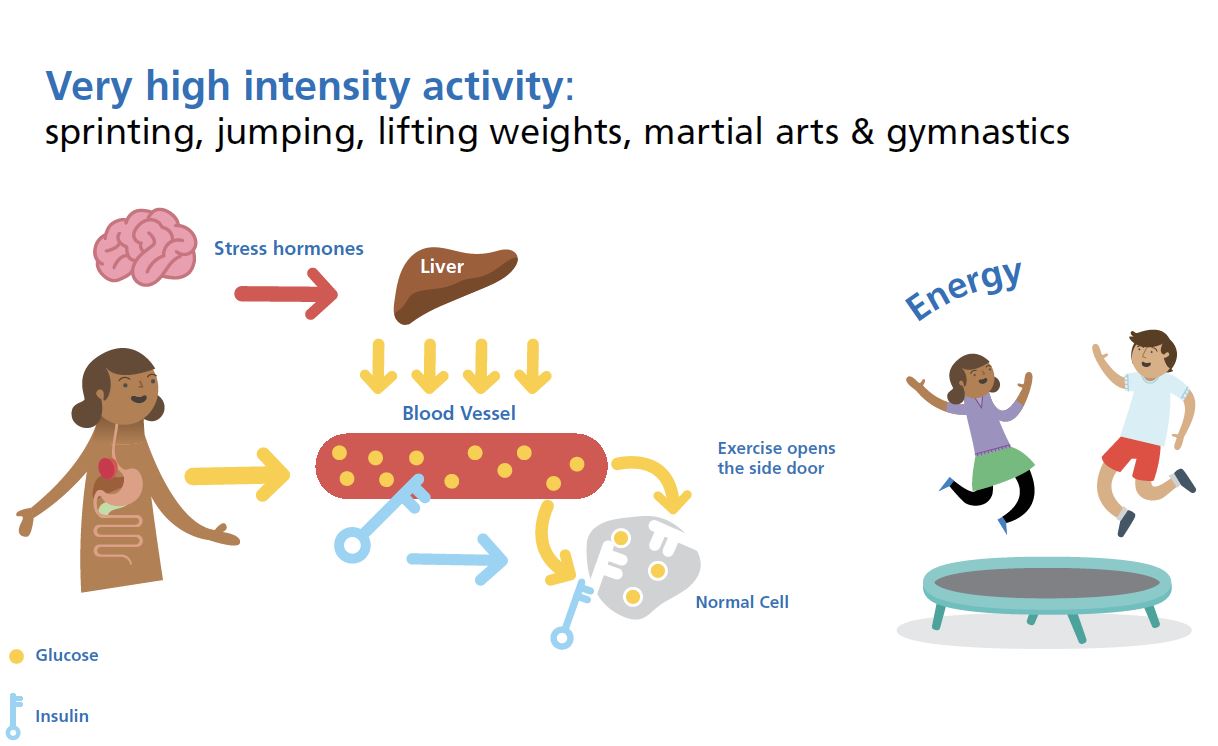
It is best to obey the Three-hour rule to make sure it’s the exercise and not another variable causing glucose issues.
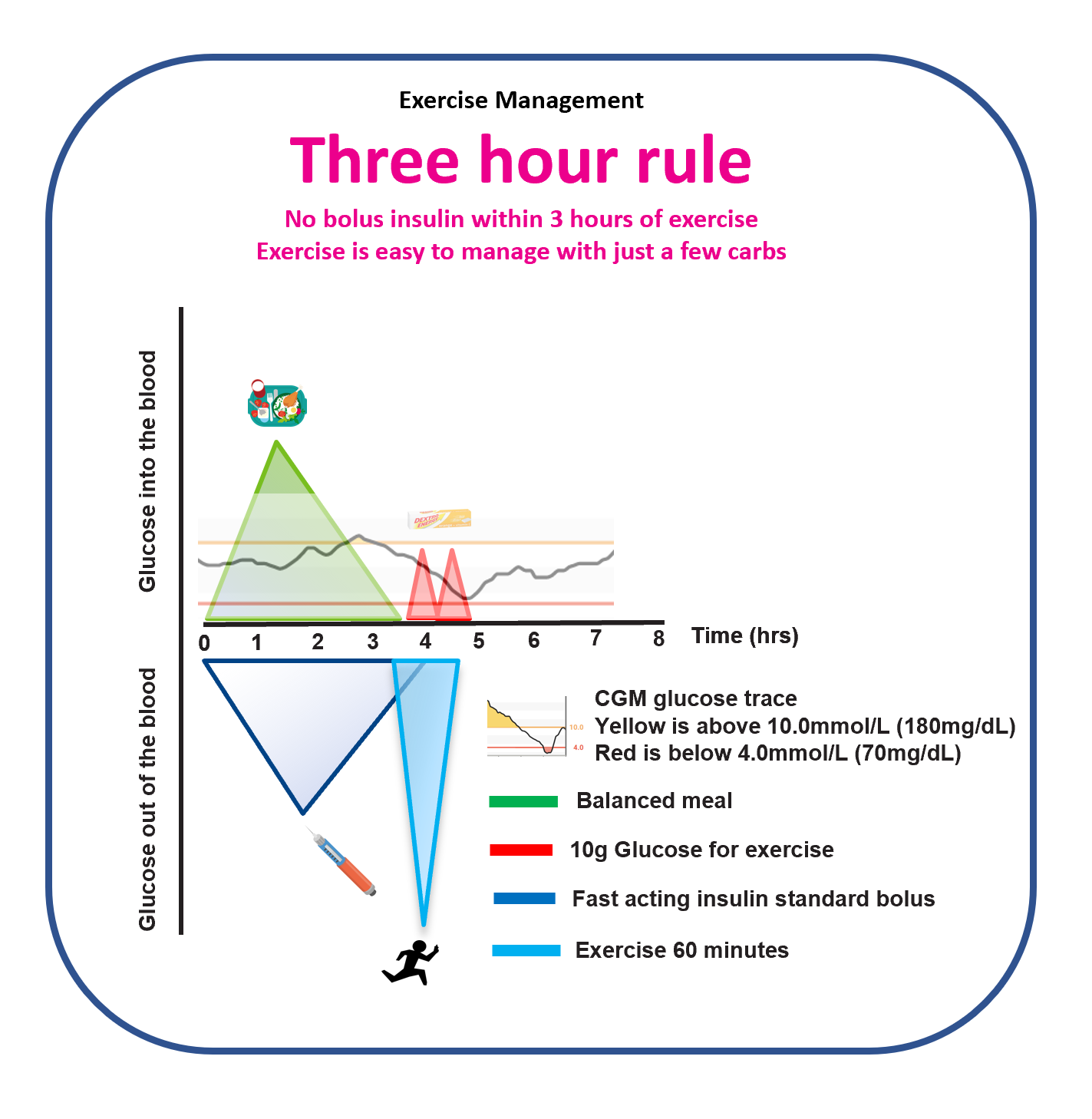
Anaerobic activities do cause muscle and liver glucose depletion if done a few time over 45 minutes or more. For example, a hard HITT workout. Therefore the same risk of going low later applies.
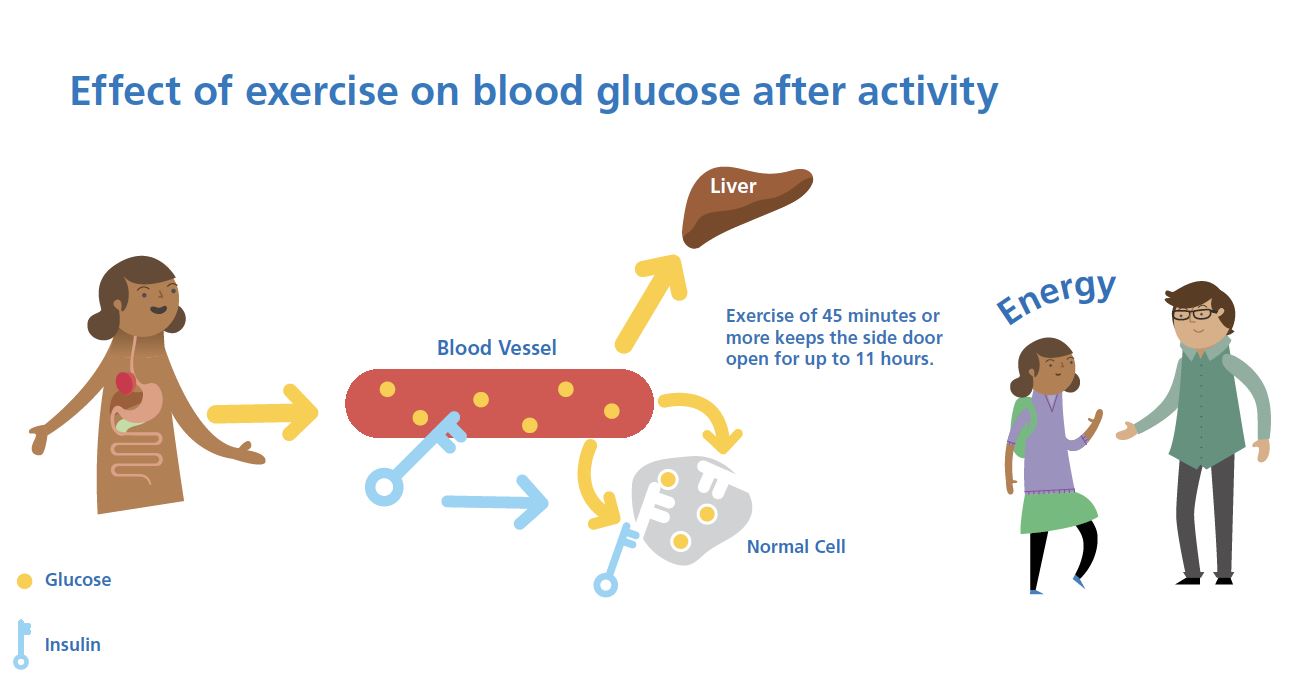
Grace and Jude, I do not see you using this page until you are a teenager, but here is a table so you can make plans when the time comes.
Work through it and I will do an example for when I do four lots of all-out 1000m rows in a session.
Always start with the “Starting Plan” row. If the glucose goes high the first time, then use the yellow “Went high first time” row. If the glucose goes low the first time, then the red “went low first time” row. Always remembering The Glucose Never Lies.
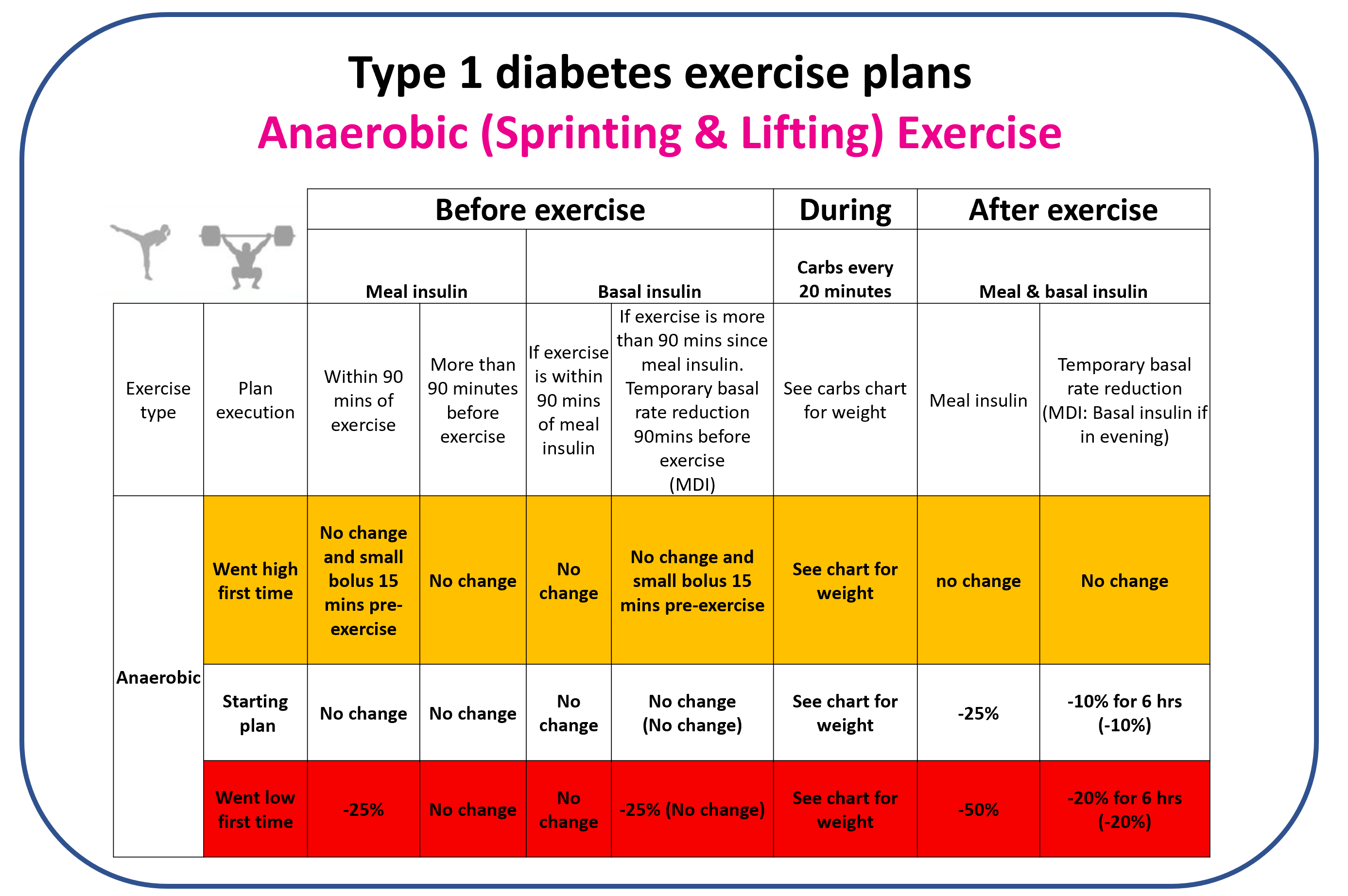
John has lunch at 12:00 on a Saturday, 50g carbs on a 1u:25 carb ratio. He is rowing at 16:00 for 45 minutes doing ahorrible 1000m x 4 all-out repeat session. He weighs 100kg. He is having 80g carb at evening meal on a 1u:20g carb ratio. Here is the plan:
- Before exercise: Full bolus of 2units
- During exercise: Check the CGM before and every 20 minutes; at 15:40, 16:00, 16:20 and follow the 60+kg mmol/L chart
- After exercise: Reduce bolus by 25% – so 3units and a basal reduction of -20% for 6 hours.
- Review the results:
- If John stated in target, continue with the white “Starting plan” row next time
- If John went high, follow the yellow “Went high first time” row next time
- if John went low, follow the red “Went low first time” row instead
If my glucose increased from 7.5mmol/L (135mg/dL) to 12.0mmol/L (215mg/dL) I would need a small bolus 15 minutes before the same session next time.
Here is the rule for giving small bolus’s of fast-acting insulin before exercise that consistently increases the glucose level.
Start low and go slow
For me, that means start with 1unit and review. For Grace and Jude, that would be more like 0.5units.
This requires some safe trial and error.
Grace and Jude, I have pulled the international guidance together into a PDF you can personalise carb amounts and glucose targets depending on the CGM you are using. Click on the device you are using and answer a few simple questions and voila!
You will need Adobe to be able to use them, which you can get for a Computer, Android device or Apple device.
Dexcom G6 – Exercise Carbohydrate Calculator
Libre 1 & 2 – Exercise Carbohydrate Calculator
Medtronic – Exercise Carbohydrate Calculator
Dexcom G6 with pump – Exercise Carbohydrate Calculator
Here are all the carb charts that cover from 10-60+kg and both mmol/L and mg/dL -just in case you cannot use pdf’s!
Carbohydrate charts for 20 minutes of exercise with a mmol/L CGM device

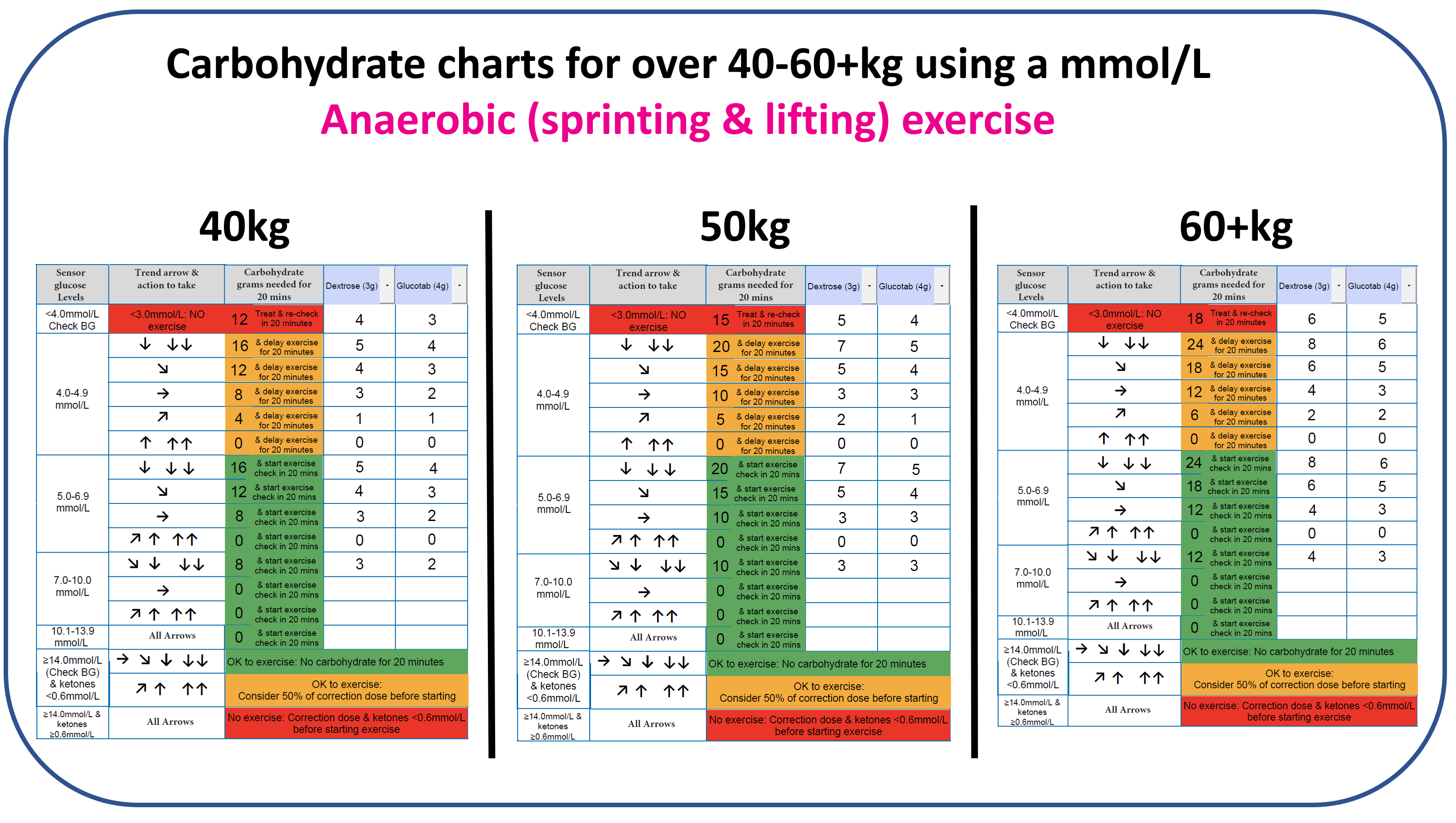
Carbohydrate charts for 20 minutes of exercise with a mg/dL CGM device
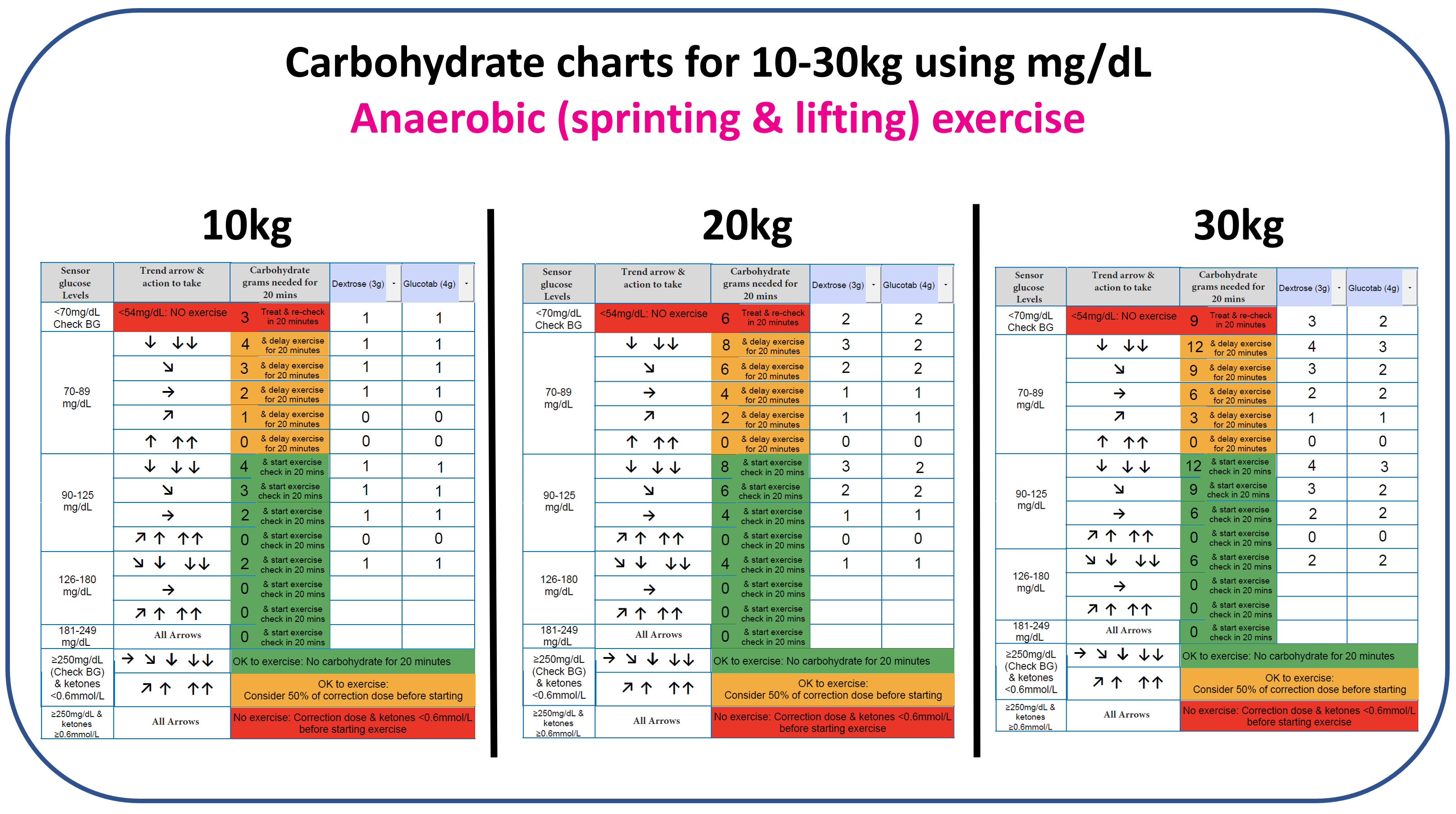
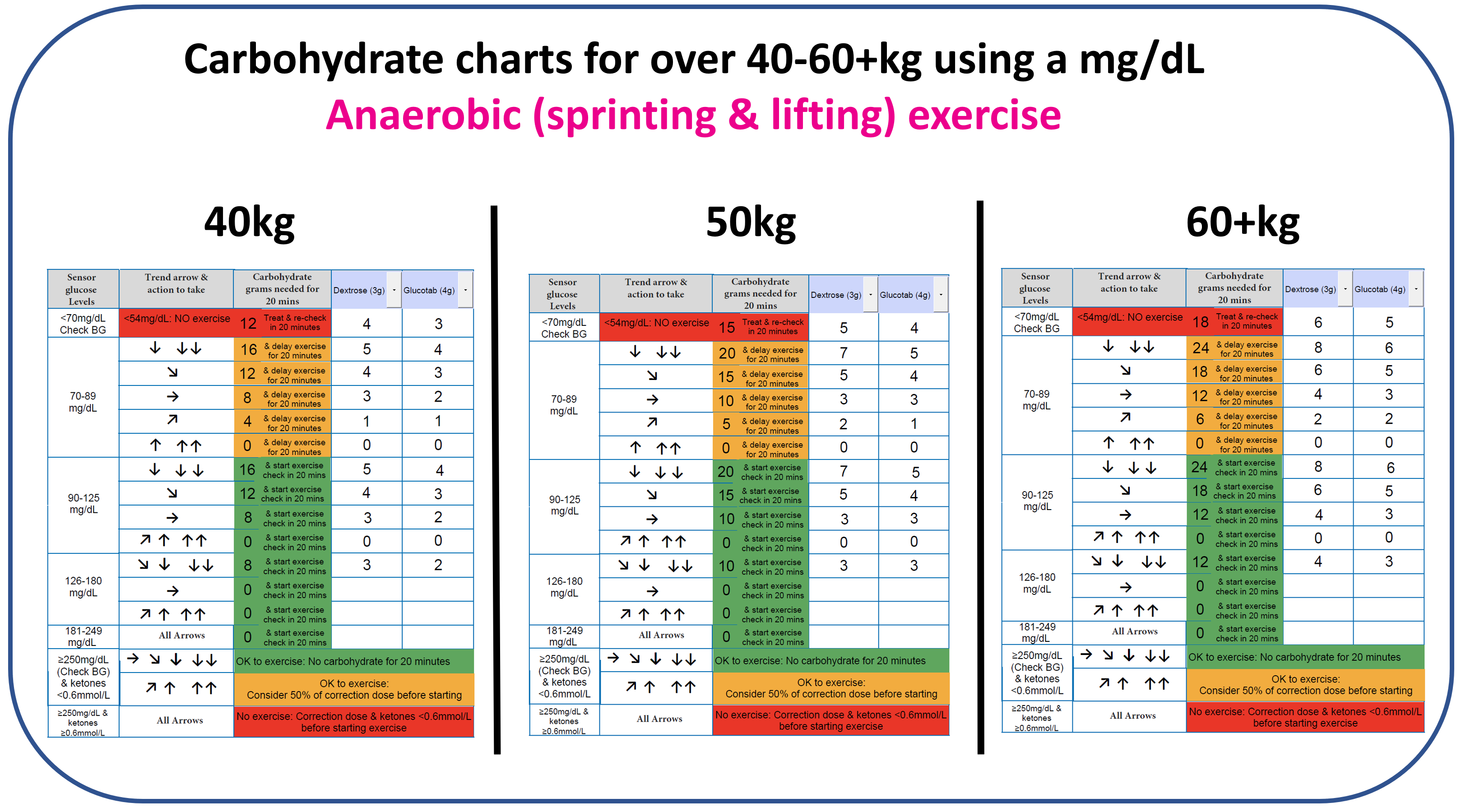
Next step: Mixed (Team Sports Exercise)
Do you want to know when a new section of blog is added, click here.
